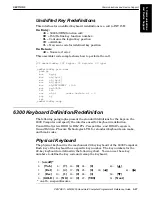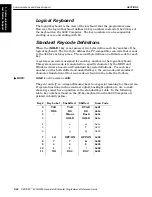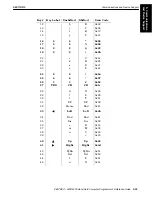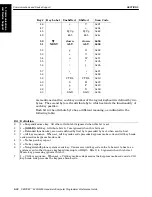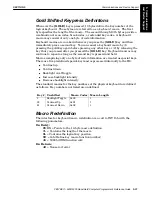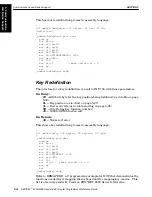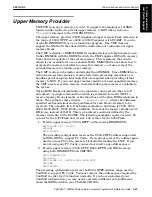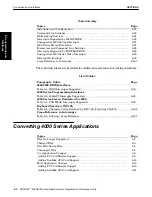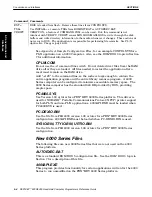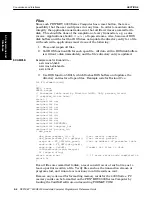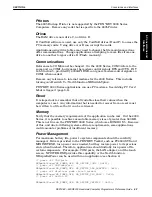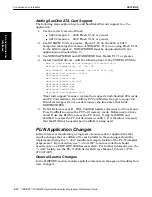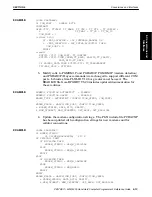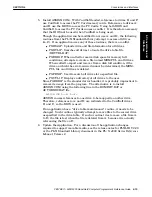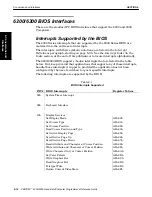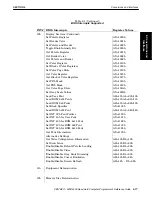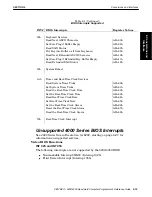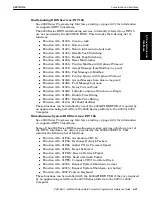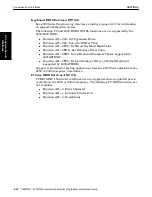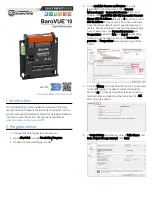
SECTION 6
Conversions and Interfaces
PEN*KEY
R
6200/6300 Hand-Held Computer Programmer’s Reference Guide 6-7
Printers
The 4805 Endcap Printer is not supported by the PEN*KEY 6000 Series
Computers. Remove any code that is specific to the 4805 Printer.
Drives
The RAM drive is now drive C, not drive B.
If CardSoft software is used, use only the CardSoft drives (E and F) to access the
PC memory cards. Using drive A or B can corrupt the cards.
Applications using drive tables may need to change the file maintenance done
after communications. Change applications attempting to move files from one
drive to another to ignore drive D (Flash, readĆonly).
Communications
References to COM3 must be changed. On the 4000 Series, COM3 refers to the
same port as COM1, but ignores the modem control signals RTS and CTS. INT
14h function 5, provided by 4000API.EXE, can ignore modem control signals on
COM1 when needed.
Remove any reference to internal modems for the 4000 Series. This includes
turning on/off switch V+ (Norlib function NRSwitchVplus).
PEN*KEY 6000 Series applications can use PC modems. See
Adding PC Card
Modem Support
(page 6Ć8).
Reset
It is important to remember that all variables lose their values when the
computer is reset. Any information that is needed to recover from a reset must
be written to a file so that it can be retrieved.
Memory
Verify that the memory requirements of the application can be met. On the 4000
Series, it is possible to achieve executable memory sizes of greater than 640 KB.
This is not true on the PEN*KEY 6000 Series, which uses ROM DOS 5. Because
of this, and due to differing system software requirements, some applications
could encounter problems of insufficient memory.
Power Management
For maximum battery life, power to system components should be carefully
managed. Drivers provided in the PEN*KEY Toolkit, such as PC4800.SYS and
MININET.EXE, turn power on as needed, but they restore power to its previous
state when finished. Therefore, applications should initially turn power off to
certain components. For example: COM ports, the LAN adapter, and the touch
screen. NPOWER.EXE provides this capability, or the Norlib function
NRApmSetPower can be used within an application (see Section 4).
// power off COM ports
NRApmSetPower(NR_POWER_OFF, NR_DEVICE_COM1 | 0xff);
// power off LAN adapters
NRApmSetPower(NR_POWER_OFF, NR_DEVICE_LAN_ADAPTER | 0xff);
// power off digitizer pads (touch screen)
NRApmSetPower(NR_POWER_OFF, NR_DEVICE_DIG_PADS | 0xff);
// power off Switch V+
NRApmSetPower(NR_POWER_OFF, NR_DEVICE_SWVPLUS | 0xff);
6. Conversions and
Interfaces

